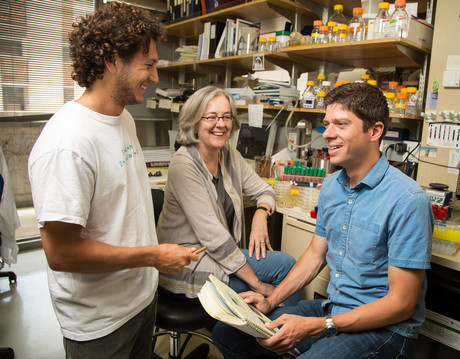New protein functions uncovered

In the bustling setting of the cell, proteins encounter each other by the thousands — yet each one manages to selectively interact with just the right partners, thanks to specific contact regions on its surface.
Now, Salk Institute scientists have developed a new method to discover which of these surface contacts are critical for such cellular interactions. According to senior author Vicki Lundblad, the method “can not only identify previously undiscovered activities for a protein, but it can also pinpoint the exact amino acids on a protein surface that perform these new functions”.
Amino acids are the building blocks of proteins — clusters of them on a protein’s surface serve as contacts, regulating how that protein interacts with other proteins and molecules. Yet Lundblad and her colleagues suspected that the extent of this regulatory landscape on the surface of proteins had remained mostly unexplored.
Long ago, the group unexpectedly discovered one such regulatory amino acid cluster, while searching one by one through 300,000 mutant yeast cells. Lundblad was determined to figure out a more robust methodology that could rapidly uncover many more of these unexplored protein surfaces — a task she assigned to then undergraduate student John Lubin.
“My task was to figure out how to search through 30 mutant yeast cells, instead of 300,000, to discover new activities for a protein,” said Lubin, now a PhD student and the paper’s co-first author.
Together with Lundblad and co-first author Timothy Tucey, Lubin turned to a protein called Est1, which Lundblad had previously discovered in yeast. Est1 is a subunit of a protein (an enzyme) called telomerase, which keeps the protective caps at the ends of chromosomes (known as telomeres) from getting too short. As the first subunit of telomerase to be discovered, Est1 has been subjected to intensive study by many research groups.
The team introduced a small but customised set of mutations into yeast cells that would selectively disrupt surface contacts on the cells’ Est1 protein. They then analysed the cells to see what effect, if any, the various mutations had. Abnormalities resulting from a specific mutation would suggest what the role of the unmutated version was. They employed a genetic trick, flooding the cells with each mutant protein and looking for the rare mutant protein that could interfere with cell function, as their previous work had shown that this would preferentially target the protein surface.
Writing in the journal Genetics, the team revealed that they discovered four functions for Est1. Impairment of any of these four functions by mutations to Est1’s surface amino acids resulted in cells that had critically short telomeres, indicating specific roles for the Est1 contacts in the telomerase complex.
The novel approach has significant implications for therapeutic drug development, which depends heavily on how drugs physically interact with their cellular targets. The team has already uncovered new functions for a set of proteins that regulate the stability of the genome, and has also applied for grants that fund research into drug targets.
“What has us excited about this technique is that it can be applied to numerous proteins,” said Lundblad. “In particular, many therapeutic drugs rely on being able to access a very specific location on a protein surface, which we suspect can be uncovered by this method.”
Repurposed drugs show promise in heart muscle regeneration
The FDA-approved medications, when given in combination, target two proteins that regulate the...
A pre-emptive approach to treating leukaemia relapse
The monitoring of measurable residual disease (MRD), medication and low-dose chemotherapy is...
Long COVID abnormalities appear to resolve over time
Researchers at UNSW's Kirby Institute have shown that biomarkers in long COVID patients have...







